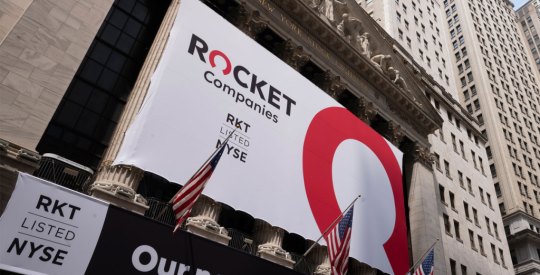Ginnie Mae is requesting $61 million for fiscal year 2024 in the budget request submitted to Congress by the White House — which is $20.6 million higher than the 2023 enacted level. The increase is due in part to the 2022 servicing portfolio seizure of bankrupt reverse mortgage lender Reverse Mortgage Funding (RMF).
“The requested amount of $61 million will produce meaningful [mortgage-backed securities (MBS)] program accomplishments, and an increased focus on current operations,” the U.S. Department of Housing and Urban Development (HUD) said in its congressional justifications for the budget request.
“The scope of current operations has expanded and now includes managing a defaulted issuer Home Equity Conversion Mortgages (HECM) portfolio, which introduces new/significant risk to the government,” the document said.
The servicing portfolio
Ginnie Mae seized RMF’s HECM-backed Securities (HMBS) portfolio in December after the lender filed for bankruptcy. The size of the portfolio was $21.3 billion, and the GSE attempted to facilitate the portfolio’s transfer to a new servicer.
“RMF was the largest HMBS Issuer in the Ginnie Mae ecosystem with 40% of the total Ginnie Mae reverse portfolio,” the document said. “Ginnie Mae went to great lengths to have the portfolio transferred to an alternative reverse mortgage servicer. Ultimately, a transaction with an alternative mortgage bank was not feasible.”
When it seized the portfolio, Ginnie Mae also assumed the responsibilities RMF held for it, requiring the organization to “manage the entire acquired reverse mortgage portfolio, ensure appropriate consumer protections, and identify long-term redesign of the HMBS program to ensure future resiliency and sustainability,” the document said.
Ginnie Mae is also monitoring the impact the seizure is having on the HMBS market, given its relatively small size, and the “smaller” number of active financiers in the space.
“[As such,] we are monitoring the impact of our acquisition of this portfolio on the sector,” the document said. “Therefore, Ginnie Mae must triage this risk on several fronts.”
There are three primary fronts listed: the enhancement of information technology platforms to track the onboarded portfolio while managing daily cash activities (like borrower draws); work with Master Subservices (MSS) to improve servicing the portfolio for ultimate dispositioning back into the private sector; and to develop policy options to enhance liquidity options in the HMBS market and to “promote efforts that ensure Ginnie Mae is in the vanguard of financial institutions with respect to counterparty risk policy and oversight,” the document said.
Need for staffing
Ginnie Mae has identified nine areas that will require new positions in order to properly manage the RMF portfolio: audit oversight; governance; MBS program policy; asset management; risk assessment; issuer compliance; securities operation; financial operations; and infrastructure development.
“We continue to spot new issues as we take the RMF portfolio in-house,” the document said. “It has become clear that the HECM program requires enhanced governance across how Ginnie Mae makes decisions and across how we assess reverse Issuers and the risks they bring. In other words, because the HMBS program presents a heightened set of operational risks for Ginnie Mae, we require additional staff to work through these issues.”
Current policy staff are also “rushing to complete urgent All Participant Memorandums that will hopefully result in increased working capital for reverse issuers,” the GSE said. The asset management team also lacks the capacity to sufficiently manage the size and complexity of the RMF portfolio, and additional reverse expertise is required in its Office of Enterprise Risk (OER).
The issuer compliance team is also leading management of the RMF portfolio, which adds pressure on its ability to “monitor compliance and enforce Ginnie Mae rules on issuers in both the forward and reverse spaces,” the GSE said. Additional staff is needed to relieve current levels of stress on HMBS issuers.
New features, GSE comment
The new feature lauches are also something that takes time and cannot involve contractors, and the facilitation of borrower draw requests — a feature unique to the reverse mortgage space — is something that the GSE has had to learn in order to “prevent the failure of RMF from harming reverse borrowers,” the document said.
In a media briefing about the HUD budget request, RMD asked Ginnie Mae President Alanna McCargo how the assumption of the RMF portfolio was progressing.
“We have acquired and fully onboarded that portfolio and are managing it now,” McCargo said. “The budget specifically includes increased support to Ginnie Mae for S&E and staffing to really help us manage this aspect of the business and our guarantee. So, we’re really pleased with the increase — over $20 million of additional funding over last year — to really help us build our capacity and our team to support and move that forward. That’s the extent to which I can really speak to the seizure.”



